Celina Marquez, a Policy Advisor with the U.S. Conference of Catholic Bishops’ (USCCB) Department of Migration and Refugee Services, visited the border the week that Title 42 ended. She reflects on her experience here:
I arrived in El Paso on Wednesday, May 10. My visit was a part of a trip meant to observe the changes to the city of El Paso once the public health emergency policy, Title 42, was lifted on May 11. Title 42, which had been in place since March of 2020, granted our government the authority to expel asylum seekers if they attempted to enter the U.S. without authorization. It was also on May 11 that the Administration’s new rule on asylum, “Circumvention of Lawful Pathways,” went into effect. The new regulation introduces new requirements and limitations to the asylum process, which the USCCB has expressed grave concerns over. My trip to this area of the border included visits to migrant shelters, conversations with non-profits and clergy members on the ground, and migrants who recently arrived in the city.
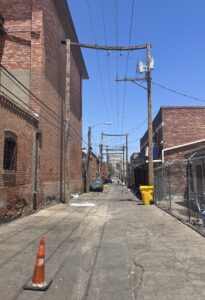
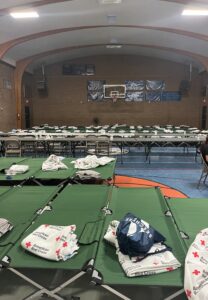
An empty street outside an aid center and inside the shelter
In the days before the policy was set to expire, the tension everywhere was palpable—it seemed as though everyone was preparing for chaos as soon as the clock struck 11:59PM on May 11. One could feel the sense of anxiety in the city of El Paso. But on Friday May 12, the morning was quiet. There were no endless lines of asylum seekers trying to cross into the U.S., the shelters were less populated than they had been just a few days prior, and camera crews and reporters crowded empty ports of entry.


Murals in El Paso
During my visit, I was able to witness the team at Hope Border Institute (HBI) work tirelessly to open a new shelter in a matter of days in preparation for an influx. I had the opportunity to spend Saturday afternoon at the new shelter along with members of HBI and other volunteers. We sorted through donated clothes to offer the guests, served lunch and dinner, offered a Legal Orientation Presentation, and spent some time learning about the journeys of the asylum seekers being helped at the shelter. One woman began to cry when she received a plate of food during lunch, and explained through tears that she had not eaten in several days. Many of the guests made it a point to let the staff and volunteers know just how appreciative they were of the hospitality they had felt at this shelter and made it known that they too were eager to help—in the kitchen, cleaning up, sorting clothes—anything they could do to be helpful.
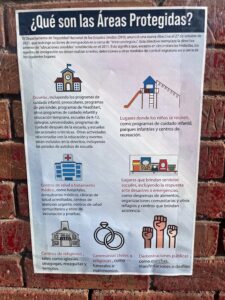
A flyer detailing protected areas, places that are protected from ICE and US Customs and Border Enforcement
There was a sense during my time at the border that it was perhaps the calm before the storm, but a few weeks later, it does not seem there will be the kind of emergency situation that was anticipated. Unfortunately, it is perhaps an indication that the Administration’s restrictions on asylum are proving effective and vulnerable populations are in limbo, unable to go home and unable to enter the U.S. without severe consequences to their immigration proceedings. While it can be easy to speak about immigration policy in detached, legal jargon, it is critical to remember the very real lives that are impacted by decisions that are made thousands of miles from the ports of entry. We must not forget about the dignity and humanity of those arriving at our southern border and keep them at the forefront of our discussions about policy.
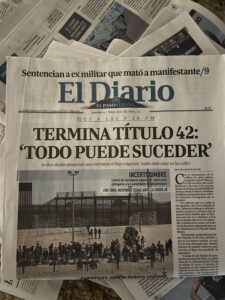
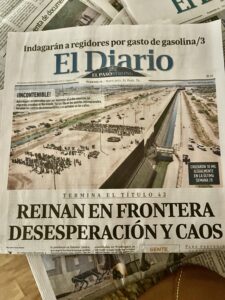

Title 42 and the border dominate the front page of El Diario, a Spanish-language newspaper in El Paso
